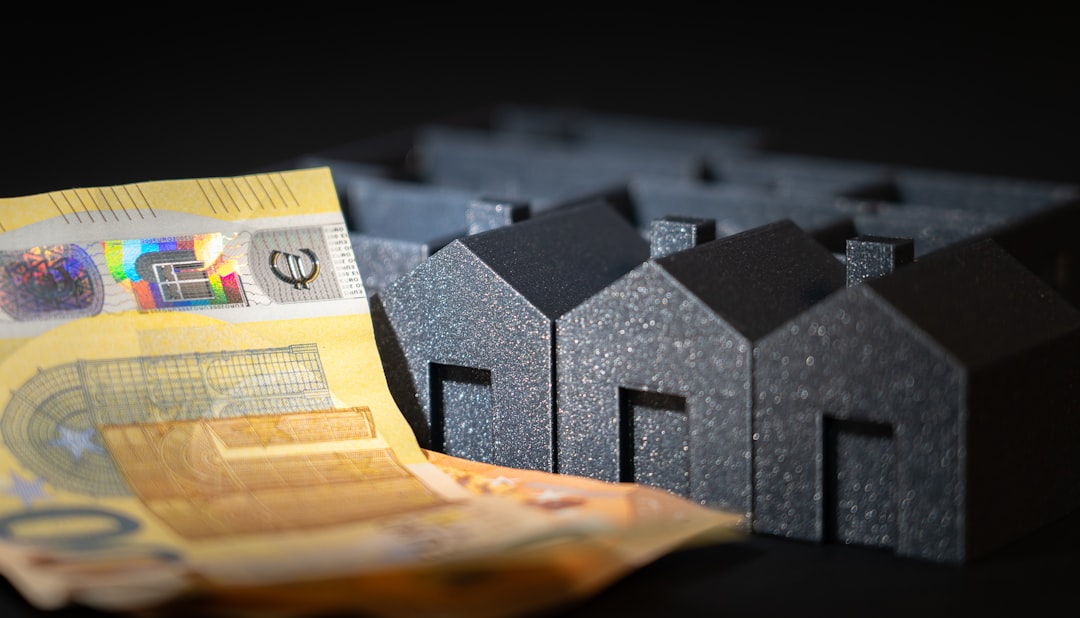

Engage prospects with a scan and streamline customer engagement with FREE QR code marketing tools by Sona – no strings attached!
Create a Free QR CodeFree consultation

No commitment

Engage prospects with a scan and streamline customer engagement with FREE QR code marketing tools by Sona – no strings attached!
Create a Free QR CodeFree consultation

No commitment
QR codes have transformed from a novelty into a strategic tool for connecting offline engagement with online action. For real estate, they offer a highly effective way to boost lead capture and accelerate the loan modification process, reducing friction for both clients and providers.
Traditional print assets, direct mail, and in-person consultations remain essential in real estate loan relief. However, a persistent pain point is missed high-value prospects who interact with these analog touchpoints but never enter the digital pipeline, causing lost opportunities and service delays. QR codes solve this by turning every brochure, postcard, and event badge into a measurable entry point, giving providers visibility into previously anonymous engagement.
As borrowers expect faster, personalized experiences, firms risk losing out due to delays in capturing intent or outdated client data. This guide explains how leaders in real estate loan modification services can strategically use QR codes to generate and qualify leads, enrich customer profiles, and optimize outreach, all while tracking campaign performance at each stage and accelerating follow-up to outpace the competition.

QR codes bridge the gap between physical touchpoints and digital outcomes, making it easier to reach business goals such as higher conversion rates and more efficient lead funneling. In loan modification programs, where borrowers often start the journey offline and where paperwork can be daunting, QR codes streamline the most critical moments. They take interest captured at the mailbox, at a housing workshop, or in a loan officer’s office and route it directly into forms, eligibility checks, and appointment scheduling.
To do this well, you need an approach that goes beyond printing a code and hoping people scan it. The best results come from designing the full path from scan to action, clarifying the offer, ensuring scannability in the real world, and using analytics to refine the experience. When executed thoughtfully, teams report meaningful lifts in qualified inquiries, faster form completion, and higher show rates for consultations.
With these steps, QR solutions address recurring pain points such as delayed lead capture, disconnected data, and untraceable print marketing. They give loan modification teams the automation and visibility needed to turn interest into action and to prioritize the borrowers most likely to qualify and engage.

The loan modification journey involves multiple decision points, strict documentation requirements, and frequent regulatory updates. Offline-to-online consistency and speed can determine whether a borrower converts or abandons the process. QR codes function as a low-friction bridge that meets borrowers where they already are.
They also inject data into a pipeline that has traditionally been opaque. If you send 10,000 postcards, how many people engaged? Which message resonated? Without QR-enabled calls to action, those answers remain unknown. With QR codes, every physical asset becomes both an engagement channel and a measurable signal for marketing and operations.

Choosing the right format determines how seamless your borrower’s next step will be. In loan modification, clarity, speed, and security matter most. These formats map well to the processes common in the industry.
Dynamic codes are recommended when you need analytics, A/B testing, or the flexibility to change destinations. Static codes can be sufficient for evergreen resources like a hardship education page, but they should be used sparingly in fast-changing programs.

The biggest missed opportunities occur where prospects are already engaging with your brand or message yet lack a direct path to take action. By placing QR codes at these intersections, you shorten the distance from interest to intake and make every touchpoint count.
Audit your typical borrower journey from first awareness to document submission. Identify where information changes hands, where lag occurs, and where staff spend time nudging next steps. Those are your prime QR placements.
Not all QR code use cases are equal. Focus on those that reduce friction at known bottlenecks, improve data quality, and accelerate speed to assistance. These proven patterns align with how borrowers naturally engage.
Each of these use cases tackles chronic issues such as late lead capture, incomplete customer profiles, and lost opportunities at physical touchpoints. When integrated with your CRM and case management tools, they also ensure intake data flows where your team works, not into disconnected spreadsheets.
Every QR scan contains useful context. You learn what message prompted action, where the person was, and what they did next. With a thoughtful tagging and routing strategy, you can turn scan events into living audience segments that drive efficient retargeting and personalized follow-up.
Start by assigning unique QR codes to each channel and stage of the journey. A flyer for delinquent borrowers, a postcard for ARM resets, and a workshop badge for homeowners seeking counseling should each have distinct codes. Sync those scans into your CRM with tags that indicate channel, creative, and next-step behavior.
By turning scans into audience intelligence, loan modification teams move away from generic follow-up and toward a lifecycle approach that respects context and intent. The result is higher response rates, shorter time to assistance, and better allocation of outreach resources.
QR codes do their best work when they serve as connectors across campaigns. They make print measurable, events actionable, and screens interactive. With Sona QR, you can compare performance by channel and iterate quickly.
Establish a simple rule: every offline asset that asks a borrower to do something must include a QR code that removes extra steps. Then build reporting that rolls up scans, completions, and booked appointments by channel and creative so your team knows what to scale.
With a centralized system for generating and tracking QR codes, you can manage version control, enforce brand consistency, and sync performance data to your CRM. That keeps your offline-to-online funnel connected and transparent.
The best QR campaigns in loan modification services are planned, tested, and iterated with care. Use this checklist to move from idea to measurable results and to ensure your team deploys with borrower empathy and compliance in mind.
Before you begin, decide how you will measure success. Common benchmarks include scan-to-form-start rate, form completion rate, appointment booking rate, and first-contact response time. Track baselines so you can quantify improvement after you roll out QR experiences.
Clarify the business outcome you need. For example, “Drive pre-qualification form completions from delinquency mailers” or “Increase appointment bookings after community workshops.” Align the QR code with a single, compelling action to avoid decision fatigue.
Map the user journey from scan to completion. List the screens or steps, the copy, and any documents needed. Remove unnecessary fields for first touch, keep the path short, and promise a quick response time to combat borrower anxiety.
Dynamic QR codes are ideal for most loan modification campaigns because you can edit destinations, run A/B tests, and capture analytics by channel and placement. Static codes have limited use cases, such as evergreen educational PDFs, but they cannot be updated if terms change.
Plan for privacy and security. Use HTTPS destinations, avoid embedding sensitive parameters in URLs, and disclose how data will be used. If you will send SMS follow-ups, ensure opt-in language complies with applicable regulations.
Design for visibility and comprehension. Place the code on uncluttered backgrounds, provide adequate contrast, and include a clear CTA such as “Scan to check eligibility in 60 seconds.” Add a short trust builder like “Secure, no impact to credit” to reduce friction.
Test across devices and contexts. Verify scannability from typical distances, under varied lighting, and with older phone cameras. Test landing pages for load speed, mobile responsiveness, and accessibility. Run a soft launch on a small batch of mailers or at one event before scaling.
Roll out codes where you already invest in borrower outreach, such as direct mail, front-desk signage, counselor leave-behinds, and workshop materials. Match CTAs to the environment, for instance “Scan to join the workshop waitlist” at event tables or “Scan to upload docs now” on approval notices.
Coordinate staffing with expected demand. If you place a code that promises a quick callback, ensure your team can honor that promise. Align deployment calendars with call center capacity so the experience feels responsive and supportive.
Instrument analytics from day one. Use UTM parameters for channel and creative, and route each QR to a unique destination when possible so you can compare performance. Monitor scan volume, form completion rate, and appointment booking rate by placement.
Iterate based on data. If a postcard produces many scans but few completions, test a shorter form or a different headline. If a workshop badge scan leads to many bookings, replicate that format across future events. Share wins and learnings with your field and counseling teams so they can reinforce what works.

Connecting offline marketing to pipeline and revenue is a persistent challenge in loan modification services. QR analytics make that connection visible by capturing the who, where, and when behind each scan, then linking those events to downstream actions like form submissions and appointments, strengthened by sound revenue attribution.
Build a dashboard that starts with scans and ends with outcomes. Include time to first response, missing document rates, and cycle time from inquiry to decision. When your team can trace performance from surface to signature, you will be able to fund the right channels and coach to the right behaviors.
Scaling QR success is about repeatable practices that honor both borrower needs and operational realities. Standardize what works, teach teams how to use it, and keep refining your approach as you learn from the field.
Invest time in enablement. Not every counselor or loan officer will think to point out the QR code during a meeting, and not every borrower will know why scanning helps them. Scripts, desk cards, and examples build habits that turn codes into conversions.
QR codes are a strategic solution to the challenges of lost leads, manual processes, and weak attribution in real estate loan modification. When added to print and event marketing, they transform static materials into digital onramps, improve data accuracy at intake, and connect every step of the journey to a measurable outcome. The result is a process that feels faster and more supportive for borrowers and more predictable and efficient for providers.
For loan modification teams, the opportunity is clear. Use QR codes to capture demand at the source, guide borrowers through the next step without friction, and learn from every scan. By addressing obstacles like missed prospects, hidden engagement signals, and fragmented data, you can reach borrowers more quickly, measure results effectively, and continually improve outreach. With the strategies in this guide, every offline interaction becomes an opportunity for growth and better client outcomes. Start creating QR codes for free.
QR codes have transformed real estate loan modification services from traditional outreach into dynamic, measurable lead generation channels. Whether it’s capturing qualified leads, streamlining client engagement, or providing instant access to modification options, QR codes turn every marketing touchpoint into an opportunity for conversion and improved customer experience. Imagine knowing exactly which flyers, mailers, or property listings drive the most inquiries—and being able to optimize your campaigns on the fly.
With Sona QR, you can create dynamic, trackable QR codes in seconds, update campaigns instantly without costly reprints, and link every scan directly to lead data and revenue outcomes. No more guessing which efforts pay off—just smarter, more efficient lead capture that accelerates your loan modification services. Start for free with Sona QR today and turn every scan into a valuable client connection.
The modification process involves capturing borrower intent through offline and online touchpoints, using tools like QR codes to streamline eligibility checks, form completion, appointment scheduling, and document uploads to accelerate and simplify the journey.
You can qualify by completing pre-qualification forms that capture your property details, loan status, and hardship type, often accessed conveniently via QR codes on materials like brochures or mailers that guide you through eligibility checks.
While the article focuses on loan modifications, refinancing can offer benefits such as adjusting loan terms, but loan modification services primarily help borrowers facing hardship by adjusting existing loan terms and accelerating assistance through streamlined digital tools.
Look for services that use measurable, data-driven approaches such as QR code-enabled campaigns to ensure efficient lead capture, fast response times, and transparent tracking from first contact to loan assistance.
Potential risks include delays if lead capture is slow or data is disconnected, and the possibility of outdated or non-compliant information if communication channels are not updated; using dynamic QR codes and integrated systems can mitigate these issues.
Use Sona QR's trackable codes to improve customer acquisition and engagement today.
Create Your FREE Trackable QR Code in SecondsJoin results-focused teams combining Sona Platform automation with advanced Google Ads strategies to scale lead generation

Connect your existing CRM

Free Account Enrichment

No setup fees
No commitment required

Free consultation

Get a custom Google Ads roadmap for your business






Launch campaigns that generate qualified leads in 30 days or less.
